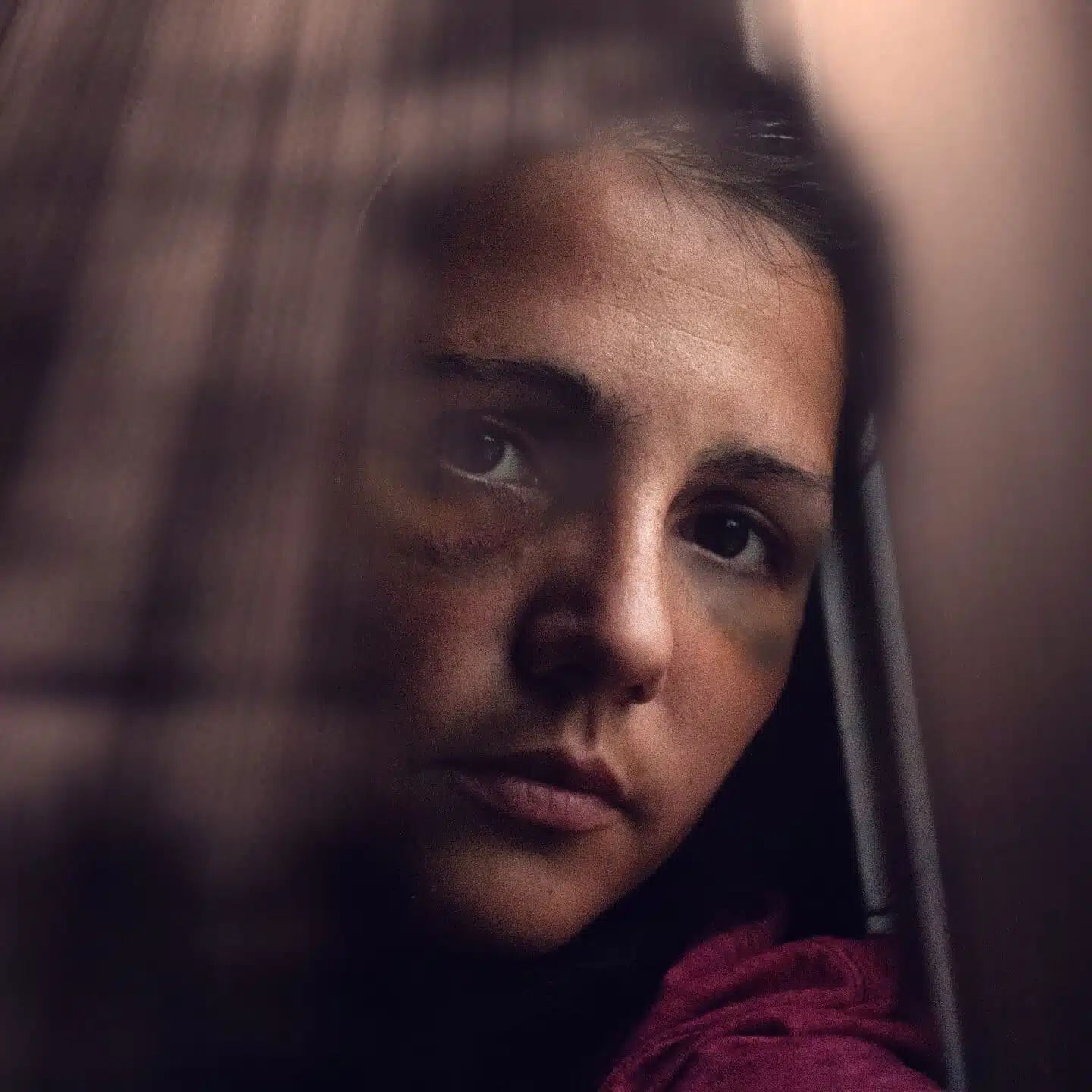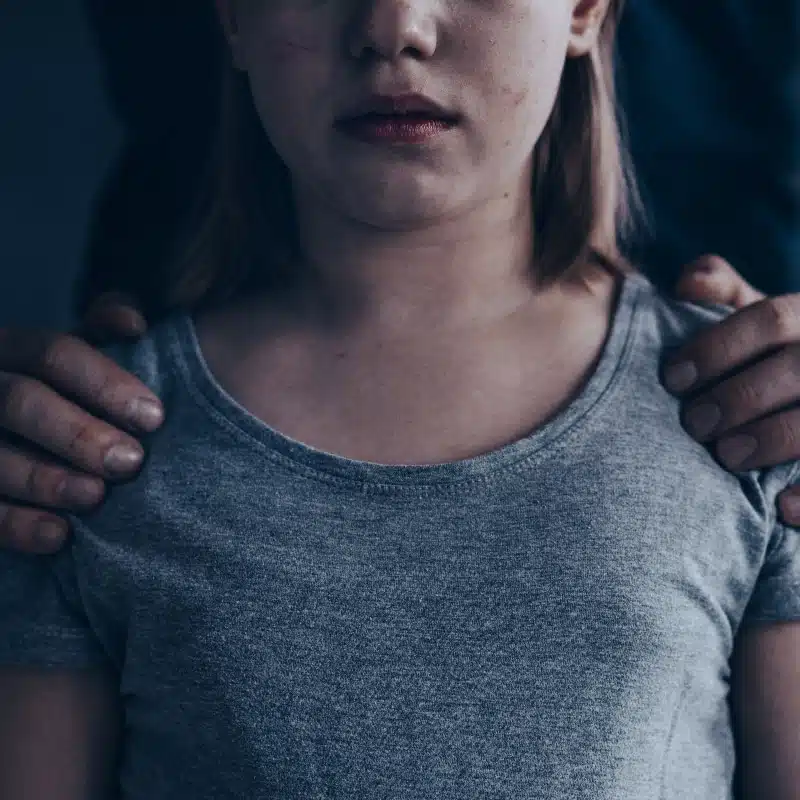
What is trauma?
Trauma refers to the emotional response that follows experiencing a distressing situation.
When a traumatic event occurs, it feels like a threat to our safety.
We may feel powerless during the experience, which can cause feelings of guilt and shame, and threaten your very identity.
It’s important to remember that a traumatic event isn’t defined by what happened, but by how we experience it. Most people who experience a traumatic event have a strong emotional response to it. It’s their survival instinct kicking in!
But for some people, this emotional impact is still felt long after the event itself. These prolonged feelings can impact their health, relationships, and daily functioning.

What is a traumatic event or experience?
Traumatic events can include:
- A recent, one-time event like a car crash or an assault
- A past, one-time event like the sudden, unexpected death of a loved one or a natural disaster
- A long-term, recurring event like ongoing domestic violence or abuse
There are three shared characteristics of traumatic events:
- They are unpredictable and unexpected
- They are beyond our control
- They exceed our ability to manage the threat
There are many different types of traumatic events. These can include one-time events like a car crash or recurring trauma like ongoing abuse.
Though the nature of traumatic events varies, most of them share three characteristics. They are unpredictable and unexpected, beyond our control, and exceed our ability to manage the threat.
The overwhelming nature of trauma can have a deep impact on our identity, mind, body, and spirit. Recovery from trauma is complex, and many factors affect a person’s ability to move on. But there is hope! Trauma survivors who receive support from family, friends, or professionals are often able to integrate the experience into their lives.
Trauma by the numbers
- 70–90% of people will be exposed to a traumatic event at some point in their life (Kilpatrick, et al., 2013)
- 6% of people will develop post-traumatic stress disorder (PTSD) as a result of the experience
- Trauma can have a lifetime impact. Trauma histories are present among:
- 90% of people in psychiatric hospitals
- 92–97% of women who are unhoused
- 75–93% of youth in juvenile justice systems
- 50–79% of men who experienced maltreatment before the age of 12 have had serious involvement with the justice system (Blanch & Shern, 2011)
A note about terminology: We use the term PTSD to refer to post-traumatic stress disorder, which is a diagnosable mental illness, and post-traumatic stress injury to refer to the psychological wounding people may experience as a result of a traumatic event. Mental health advocates have suggested the use of the term post-traumatic stress injury (PTSI) to help focus attention on the experience of trauma. In this course, we will use the term PTSD when we are speaking about the diagnosis, and PTSI when we are referring to psychological injury a person may experience as a result of trauma.
Trauma is a universal life experience. Between 70 and 90 percent of people will experience a traumatic event at some point in their life.
There are many factors that affect how well a person recovers from trauma. These factors can increase their vulnerability to developing PTSI:
- Age at which the trauma occurred
- Psychiatric history of the individual and their family
- Severity of the trauma
- Accompanying physical injury
- Lack of social support
For example, 90% of those in psychiatric hospitals have a trauma history. So do 92–97% of women who are unhoused, and 75–93% of youth in juvenile justice systems. What’s more, 50–79% of adult men who experienced maltreatment as children have been involved with the justice system.
Types of trauma
Interpersonal trauma

- Childhood abuse
- Sexual assault
- Domestic abuse
- Elder abuse
External trauma

- War
- Sudden death of loved one
- Extreme poverty
- Natural disasters
- Accidents
Developmental trauma

- Child abuse and neglect
- Witnessing violence at home
Historical trauma

- Residential schools
- Genocides
There are four main types of trauma, all of which can occur in isolation or with one another.
- Interpersonal trauma is when harm directly targets a person or group.
- External trauma is when one lives through difficult conditions such as war, natural disasters, and extreme poverty.
- Developmental trauma is experienced during childhood and affects the child’s psychological, physical, and mental growth and development. Examples include childhood abuse, neglect, and witnessing domestic violence.
Historical trauma (also known as intergenerational trauma) is experienced by a specific cultural group. This type of trauma includes a history of being systematically oppressed through discriminatory laws and policies. This results in an impact that is felt across generations.
The trauma continuum

Accident, or a single event

Prolonged developmental trauma

War

Colonization/historical
It can be helpful to consider trauma and its impacts on a continuum. The continuum visualizes the degree to which a person may be affected by trauma.
People who experience fewer traumatic events and have the resources to address their impact place low on the continuum. However, as the frequency and duration of traumatic events increases, so do the symptoms they may experience.
The other end of the continuum describes a history of severe, long-term trauma. For those who belong to marginalized groups, factors such as limited social support, socioeconomic status, and interpersonal discrimination further contribute to stressors. This is called minority stress, and also has an impact on health and well-being.
Those who have endured prolonged trauma may struggle with chronic behaviours like self-harm, substance use, and suicidal tendencies as they attempt to cope with their experiences.
It is important to understand that the continuum does not attempt to rank trauma. Rather, it seeks to explain the profound and devastating impacts of all types of trauma.
Adverse childhood experiences have a lifelong impact on emotional and physical health.
Adults who scored high on a measure of adverse childhood experiences have been shown to be at higher risk for obesity, diabetes, myocardial infarction, stroke, depression, smoking, and alcohol and other substance use.
Behaviours like smoking and substance use may be practiced to numb pain, self-heal, and cope with the lasting effects of childhood experiences. These behaviours, in turn, can contribute to poorer physical health later in life.

Trauma: body & brain
- Overproduction of stress hormones
- Stress hormones stay in the system for hours or days
- Alarm system in the brain remains “on”
- A traumatized person may exhibit:
- An exaggerated startle response
- Difficulty reading faces and social cues
- Misinterpretations of other people’s behaviour as threatening
- Difficulty sleeping
- Avoidance of situations they find frightening
- Responses are involuntary
Our brains and bodies have evolved to respond to danger to ensure our survival. The brain’s limbic system is our internal alarm. It releases stress hormones like adrenaline and cortisol. These hormones increase blood to the muscles and sharpen our senses, which enables our bodies to respond quickly. Once the threat is over, the body gets rid of stress hormones and the system returns to normal.
However, if the trauma occurs early in life and lasts a long time, the effects of the body’s response last longer as well. The limbic system gets stuck on high alert. Everyday stresses start to contribute to keeping the alarm elevated.
The part of the brain that’s usually in charge of calming down the limbic system is called the prefrontal cortex. When someone is constantly in this state of high alert, their prefrontal cortex has trouble regulating their emotions and negative thinking can take over.
This creates a vicious cycle where a person keeps thinking about their traumatic past, which in turn pushes their limbic system to remain in high alert. Their thoughts keep their body tense and stressed, in a constant state of readiness to respond to danger.
It’s important to remember that these responses to trauma are involuntary. The body reacts to perceived danger before the brain can figure out what is going on. These reactions can be triggered by cues in daily life that a person associates with their original traumatic event.
Fight – Flight – Freeze
FIGHT
The body goes into high alert and tries to counter the threat
FLIGHT
The body goes into high alert and tries to escape the threat
FREEZE
The body shuts down and becomes immobile in the face of the threat
People react to threatening situations in different ways. These reactions are evolutionary responses that have allowed humans to survive threatening situations.
For those with a history of trauma, everyday situations may cause the brain to react with fight, flight, or freeze behaviours. These are physiological states which prepare the body to deal with perceived threats.
Healthcare institutions can be stressful places. Patients must navigate unfamiliar physical spaces, try to understand complex instructions or procedures, and tolerate strangers touching them. For those with a history of trauma, this can trigger a fight, flight, or freeze response.
Healthcare providers often see this with their patients. But if the provider is unaware of the patient’s trauma history, then the person may be considered problematic. For example, a trauma survivor may be labeled as violent or argumentative if they go into “fight” mode when triggered. Or a survivor who tries to escape what they feel is an unsafe environment may seem like they’re leaving against medical advice.
Taking time to learn about a patient’s life can help providers deliver better care.

The effects of trauma
Trauma can result in:
- Compromised immune systems
- Increased physical and mental stress
- Decreased trust
- Attachment difficulties and relationships that have conflict
- Rigid or chaotic behaviour
People with a history of trauma are at higher risk of poor physical health. Trauma can result in decreased trust, attachment difficulties, relationships that have conflict, and rigid or chaotic behaviour.
Trauma affects how a person manages their relationships, including those with service providers. Taking the time to find out about a person’s trauma history can not only help with early physical interventions, such as for chronic conditions, but also help build therapeutic relationships that are grounded in respect and trust.
Trauma & healthcare providers
HCPs are exposed to trauma in their work in two ways
Directly
- Sudden or unexpected death of a patient
- Critical trauma cases
- Workplace violence or threat of violence from patients
Indirectly
- Witnessing/learning about traumatic events that have occurred to their patients, such as sexual assault
- (Also known as secondary traumatic stress)
Exposure to trauma is a part of many healthcare providers’ daily work life. This can take the form of direct trauma, like the unexpected death of a patient or workplace violence, or indirectly, such as learning about traumatic events that have occurred to their patients.
Even before the COVID-19 pandemic, the rate of PTSD in healthcare providers ranged from 2.2% to 2.4%, with higher rates found in those working in emergency departments and psychiatric in-patient units, and among trauma surgeons.
HCP experiences during the COVID-19 pandemic
Emerging data from research studies show that:
- One in four healthcare providers in Canada meet criteria for a probable diagnosis of PTSD
- 68% reported levels of depression
- 62% reported having anxiety
- 65% reported symptoms of stress
- Seven in 10 reported feeling numb or detached from other people, their activities, or their surroundings
- 8.7% reported hazardous alcohol use
- 49.7% reported problematic substance use
(McKinnon et al, in preparation)
The COVID-19 pandemic created unprecedented demands on Canada’s healthcare system. As a result, HCPs were exposed to numerous traumatic events, while dealing with extremely difficult work environments, high levels of stress, and feelings of lack of support.
The pandemic has emphasized the importance of implementing trauma-informed care in our industry.
Trauma is highly prevalent amongst Canadians and is associated with a range of health consequences. Trauma-informed care can help healthcare providers shift their perspective from single-issue response to looking at the patient as a whole person.
As a result of their trauma, survivors may experience changes in their beliefs and behaviours. These changes can affect how they are able to utilize care services.
- Survivors may feel a sense of powerlessness and hopelessness following the traumatic experience. These feelings may cause them to believe they are unworthy of care. They may see others as untrustworthy and be unable to think about their future with a longer-term view.
- Trauma affects a person’s ability to manage and regulate their emotions. Survivors may rely on substance use, suicidality, and self-harm as ways to regulate their emotions. These behaviours can, in turn, have a significant impact on their health.
- People living with PTSD tend to seek care in primary-care settings, rather than the mental health services that they actually need. Providers in primary-care settings are insufficiently trained in providing trauma-specific care and this can result in the care needs of this population not being met. In fact, lack of knowledge about the client’s trauma history creates the risk that survivors are misunderstood by their healthcare providers, causing retraumatization of the client.
Trauma-informed care emphasizes physical, psychological, and emotional safety for both healthcare providers and care recipients. It is a care approach that is based in the knowledge of trauma and its impacts. Trauma-informed care fosters a culture which is strengths based and focuses on helping survivors to rebuild their sense of control and empowerment. For HCPs exhausted and struggling with their own mental health concerns in the aftermath of the pandemic, trauma-informed care offers a way forward in which the mental health and wellbeing of both survivors and care providers is given attention and importance. Thus, trauma-informed care offers a framework for providing effective, person-centred care.
A trauma-informed approach invites us to shift our perspective. Rather than identifying the “symptoms” resulting from trauma, this approach asks us to recognize the “symptoms” as a person’s response to trauma.
In this module, we learned that trauma affects every aspect of a person’s being — their mind, body, and spirit. These effects can be devastating and long-lasting.
Traumatic events are experienced by the vast majority of the population, including those who care for others.
A trauma-informed approach invites us to shift our perspective. Rather than trying to identify the “symptoms” resulting from the trauma, this approach asks us to recognize the “symptoms” as a person’s response to trauma. Trauma-informed care invites us to consider our own humanity as well as the personhood of those who are in our care.


